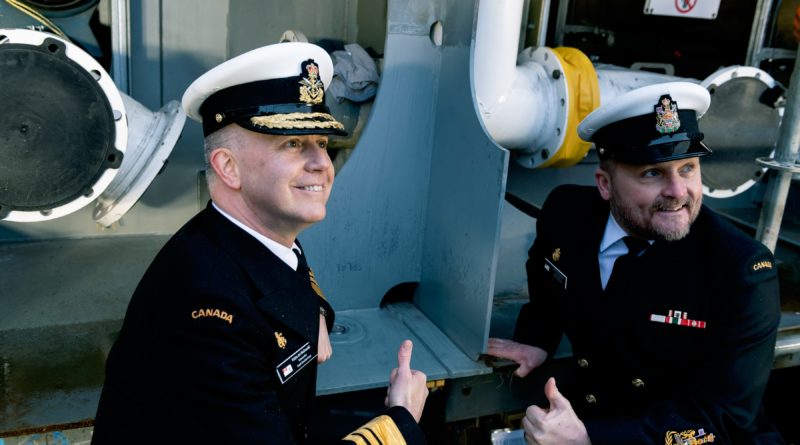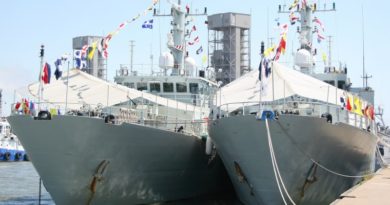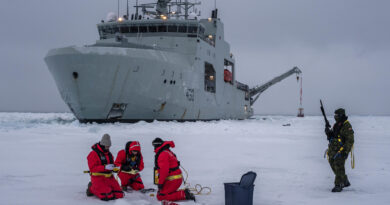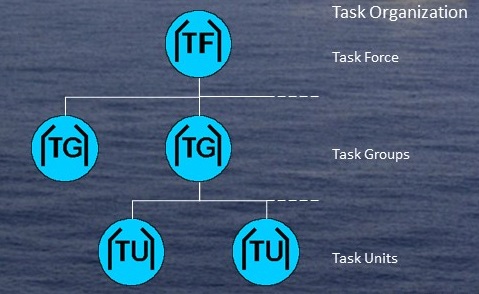Keel-Laying
The laying of the keel1 of a ship is one of the significant dates in that ship’s life.2 The date in effect marks the birth of the ship. After a gap since 1998 when the keel was laid for Her Majesty’s Canadian Ship (HMCS) Summerside, on 9 June 2016 the keel was laid for the future HMCS Harry DeWolf, first of the patrol vessels of the Arctic and Offshore Patrol Ship (AOPS) project3 being built for the Royal Canadian Navy (RCN) as part of the National Shipbuilding Strategy. On 16 January 2020, a ceremony at Seaspan Shipyard Vancouver marked the keel-laying of the first ship of the Joint Support Ship (JSS) project, the future HMCS Protecteur.
The keel of a ship is the “primary fore-and-aft part of a ship’s frame. It runs along the bottom connecting the stem and the stern.”4 In a wooden or older steel ship, the keel extends the whole length of the vessel. Attached to it are the stem (the foremost steel part forming the bow), sternpost (the upright structural member at the stern) and the ribs of the vessel. This definition reflects how ships were customarily built. Nowadays a ship may be built of blocks, fabricated separately with fittings and equipment inside, then brought together to form the hull and superstructure of the ship. In the case of the support ships, each is built of 13 ‘rings’ composed of 39 ‘grand blocks’ made up from a total of 123 smaller blocks. It can be the lowering of part or whole of a grand block onto a cradle on the building ways5 that is the ‘keel-laying’ for a modern naval vessel.6
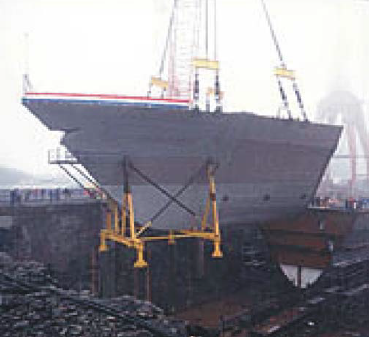
A keel-laying is a significant date because it customarily marks the start of full production of a ship. For a civil ship, the date locks in applicable construction standards. Naval construction is allowed more flexibility, and aspects of the building can be changed after a keel-laying, Much activity, such as design, ordering of material and initial fabrication takes place prior to laying of the keel, so in many respects that date is one of convenience for a warship. And the laying of a keel is no guarantee that the ship will be launched and completed. Ships can and have been cancelled, or converted into another type of ship, before being launched. For analysts of naval affairs and for ship fans the date of a keel-laying is of interest as the duration between it and the date of launching of a ship is an indication of government support to the project, of the complexity of the engineering and logistics involved, and of the efficiency of the shipbuilder.
A keel-laying ceremony is an informal affair arranged, for the most part, by the ship’s builder. Traditionally, after people gather and a short address is made, a section of keel is lowered into place onto a cradle on the ways. The sponsor of the ship7 or senior naval representative then declares the keel “well and truly laid.” 8 Mementoes (e.g., silver plates, silver hammers) may be presented – these become part of the official artifacts of the ship. A keel-laying ceremony traditionally invites good luck in the construction of the ship and throughout her life. Chaplains of various faiths say a few words of blessing that the ship may be protected, and older customs may take place. Elders of first nations may attend. In some navies, one custom has the senior naval representative laying a silver dollar under the keel before it is laid. In other navies, a coin may be laid by the sponsor or the youngest or oldest tradesperson of the shipyard. In the US Navy, the sponsor may be invited to weld her initials onto a metal plate which is placed in the ship. A silver hammer may be used to drive a silver nail into the keel. Whatever the custom, the intent is to keep the ceremony short, simple and in accordance with the traditions of the sea.9

The coin used 17 January 2020 2016 for Protecteur was specially designed by the Department of National Defence and Seaspan. Coins do not have to have a specific relationship with the ship’s name, but should have some value, whether because they are in circulation (a ‘coin of the realm’) or there is a cost in creating them. For Protecteur, a coin design depicts the ship and its badge on one side, and logos of Seaspan, the RCN and the Canadian government on the other side. Sixty numbered copies of the coin were made. Coin #1 was laid by Mr Jeff Smith, a member of Seaspan’s staff. Coin #2 remains with the ship as an artifact, and the remaining top 10 coins were given to important people. Seaspan also procured 500 copies of the coin to be given to their employees as a memento of their efforts.
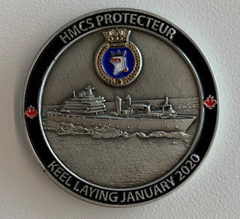
During a keel-laying a ship may be referred to by her project number (in Protecteur’s case, JSS1) or builder’s hull number in preference to her name, as the ceremony at which a ship is named occurs later with the launching of the ship.10 And it has not been unknown for a ship’s name to be changed whilst she is still under construction. The shipbuilder’s number for a ship is the sequential number of hulls built by that company. What will become HMCS Protecteur is Seaspan hull number 194. Typically, a plaque with the builder’s name and number is affixed to the back bulkhead of the ship’s bridge.
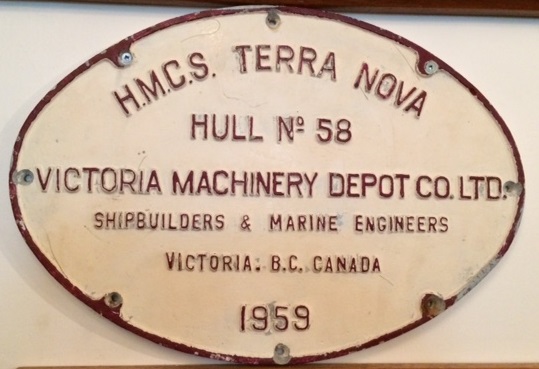
Naval Museum of Halifax
The keel-laying of Seaspan hull 194, the future HMCS Protecteur, is a welcome event, another sign of rebuilding the RCN and providing it with the support capability to be a blue-water navy. In the interest of a robust shipbuilding industry and a strong Navy, it is hoped that Canada will maintain a continuous program of building ships beyond current projects, and that there will be many more laying of keels for HMC Ships in accordance with the customs and traditions of the Navy and the sea.
Notes:
1. A previous version of this Note, dated 29 January 2017, was written from the perspective of the Arctic and Offshore Patrol Ship project.
2. For a Canadian warship, significant dates also include launching and naming, acceptance into service and commissioning, and paying off (being taken out of service). In modern practice, launching and naming, and acceptance and commissioning, are often conducted as separate ceremonies.
3. The RCN at some point in a shipbuilding project determines the type designation of the vessels being built. Canada is signatory to a North Atlantic Treaty Organization Standardization Agreement which lists ship type designations to be used by allies. ‘Arctic and Offshore Patrol Ship’ and ‘Joint Support Ship” are project titles, not ship types.
4. A-CR-CCP-602/PF-001, Royal Canadian Sea Cadets – Instructional Guides, 2007-06-18
5. Ways are platforms, sloping down the shore, on each side of a ship under construction. A frame called a cradle is constructed around the hull of the ship while she is on the launching way. On launching, the vessel in the cradle slides down the ways into the water.
6. In6. In recognition that a block-built ship does not have a keel to lay, the US Navy uses the term ‘keel authentication’ for the ceremony marking the beginning of the ship’s life.
7. A ship’s sponsor is traditionally a woman who is typically selected for her relationship to the ship’s namesake or role. It is said that the sponsor’s spirit and presence guides the ship throughout her service life. (US Secretary of the Navy Instruction 5031.1C, 29 September 2009)
8. See: Keel for future HMCS Harry DeWolf “Well and truly laid” http://www.navy-marine.forces.gc.ca/en/news-operations/news-view.page?doc=keel-for-future-hmcs-harry-dewolf-well-and-truly-laid/ip9iif84 and “Seaspan Shipyards hosts ceremonial keel laying for the Royal Canadian Navy’s future Joint Support Ship” https://nss.seaspan.com/featured-news/seaspan-shipyards-hosts-ceremonial-keel-laying-for-the-royal-canadian-navys-future-joint-support-ship/.
9. For more on customs and traditions, see “Customs and Traditions of the Canadian Navy,” Graeme Arbuckle, 1984; “Customs and Traditions of the Canadian Armed Forces,” E.C. Russell, 1980; and the RCN “Manual of Ceremony for HMC Ships, Submarines and Naval Reserve Divisions.”
10. The shipbuilder’s hull number is not the same as the number painted on the hull of a naval vessel. The RCN assigns a number, traditionally called a pennant or pendant number and often nowadays at times called a hull number, to each vessel. In the RCN, a ship’s type is indicated by the hundreds-series block of her number. Patrol ships are in the 400 block and support ships (e.g., replenishment oilers) are in the 500 block. Protecteur is assigned pennant number 520.
A PDF of this Information Paper may be found here.

